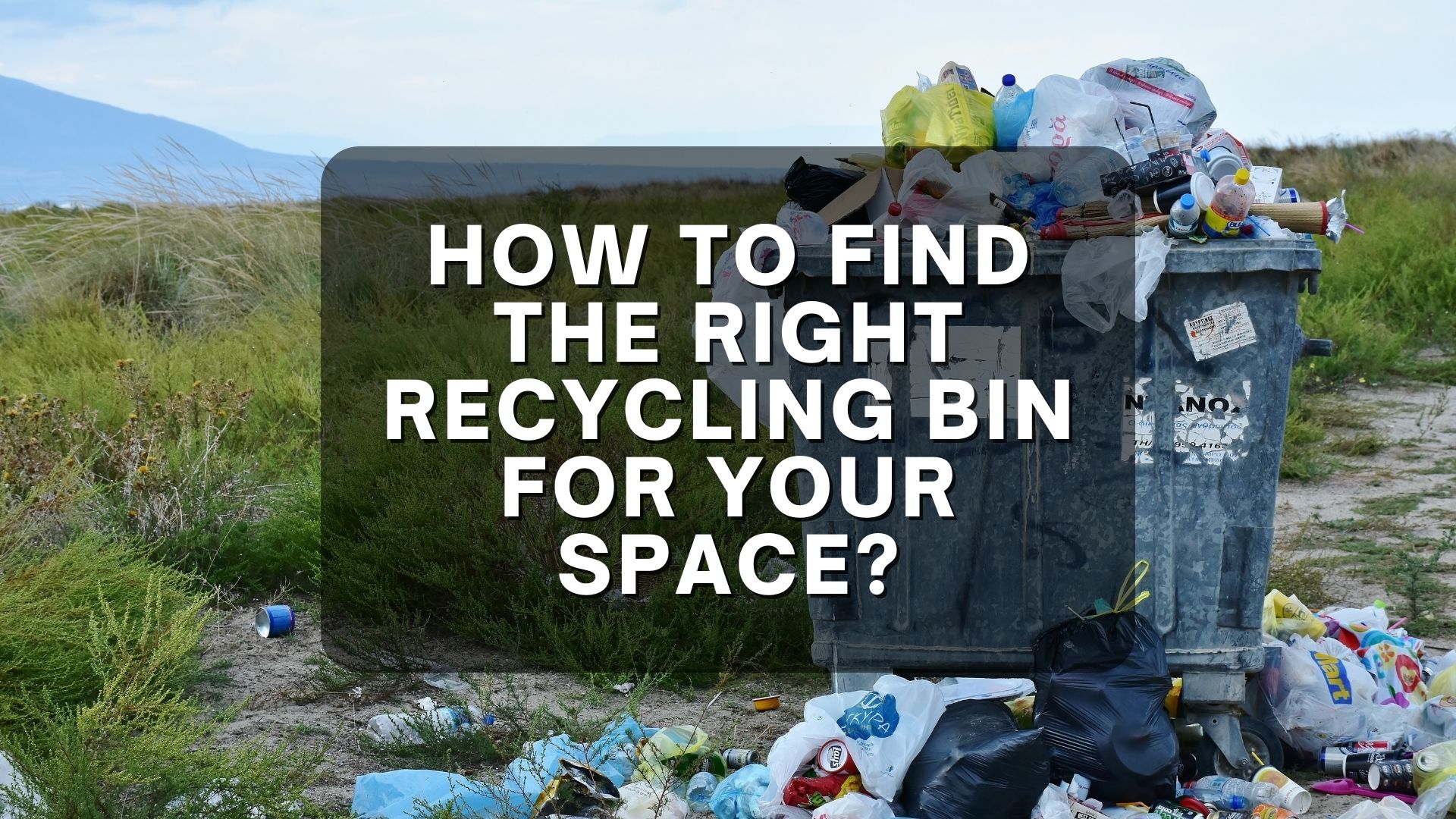
Recycling has long been regarded as one of the most effective techniques to significantly improve environmental preservation and protection. Recycling is the process of using rubbish to make new products, and it has significantly decreased the amount of waste produced globally.
Not only is it crucial for the environment, but also for humans and future generations. We need to take quick action since the quantity of rubbish we produce is rising. Since the population of the globe is expanding, so too does the amount of rubbish produced. Waste that is not recycled is kept in landfills and dumps that are constantly expanding.
The Right Recycling Bin Can Change the Course of Environment
The regulations governing recycling might change depending on where you reside. Some locations allow individuals to deposit all of their recyclables in one container, while other locations have different bins for each type of recyclable. In some regions, you may recycle at the curb, in street bins, or by bringing your recyclables to the local recycling facility.
Merely 9.1% of plastics are recycled, making them the material that seems to be the most perplexing because some plastics can be recycled while others cannot. Bottles are acceptable, but plastic bags are not. Always recycle these things since you can reuse glass many times over and you can create new paper products from recycled paper.
Recycling Bin Helping the Planet
You can follow your recycling strategy more easily if you select the right bins for the various areas of your home. First off, categorizing materials as you use them—whether they are plastic, glass, paper, or anything else—will make life much simpler on recycling day. Even if almost anything may be recycled, make sure to look at the recycling percentage on plastic products because this will enable you to determine the right disposal procedures. It is also advisable to scrape off and/or rinse anything that was previously packed with food or liquids. To live even more sustainably, get one of these compost containers for that extra food.
Choosing the Right Recycling Bin
You’re trying to decide which kitchen bins are the greatest. Although you will undoubtedly require one of those, you should also consider dumpsters for other areas of your house. Others are designed for outdoor usage, while others include dual compartments (one for recycling and one for rubbish), and some put an emphasis on aesthetics. Certain bins are also ideal for specific sorts of recycling, such as when you wish to carry them from one area to another or throw in piles of papers or recently washed jars.
In general, it’s critical to choose the appropriate recycling bin for your requirements to really use it. For instance, you could desire something that you can hide. Try a tall plastic container that slips beneath a kitchen counter in that situation. Choose a fashionable, handwoven basket or anything in a cool hue that complements your décor if you want a bin for your home office. Or, if you enjoy hosting events, a sturdy outdoor container with divisions that are clearly labelled would be in order. Even recycling containers for vehicles are available.
After determining your needs, it’s time to think about some practical elements, such as foot pedals, gliders, and dividers. Consideration should also be given to size. Consider how many recycling things you use each week and if you’ll be moving the container to a recycling facility or leaving it in one location. Consider where you’ll store the supplies before purchasing them. To choose an outdoor bin that will last, opt for something composed of thicker plastic or steel.
Benefits of Investing in Recycling Bins
Not only do raw material sources remain unaltered during the recycling process, but less energy is used than during the initial production process. Both the environment and the customer benefit from this. Because it is less expensive to produce recycled items, consumers win financially. This is due to the fact that less energy is needed and the expenses related to locating, extracting, and shipping raw materials are reduced.
Power Bear’s Take on Different Colours for Recycling Bins
Blue Recycling Bin
You undoubtedly saw the blue recycle can. This recycles bin’s color has significance. It denotes the types of goods that can be placed within.
You can throw paper and paper products in the blue recycling container. The color blue represents the act of protecting the ecology and trees, particularly the animals.
So, do not hesitate to place your workplace documents and cardboard in the blue recycling bin the next time you see one.
Red Recycling Bin
Materials that have a thin plastic covering should be placed in the red recycling container. They primarily collect trash from landfills.
Plastic bags, polystyrene, adhesive tapes, cling wrap, glazed wrappers, and other materials can go in the red recycling container.
Green Recycling Bin
Organic waste goes in the green recycling containers. The organic material collection is crucial for the environment. They can still be utilized for various purposes even though they will eventually degrade if you throw them away.
Foods, flowers, coffee grounds, produce, and meal leftovers can all be disposed of in your green recycling container.
Yellow Recycling Bins
A more all-encompassing container you may have in the environment is the yellow recycling bin. It is a combined recycling container with a variety of items in it.
You still can’t throw out everything you come across in the yellow recycling container, though.
Glass bottles, cardboard, newspapers, plastic, aluminum cans, milk and juice cartons, office documents, and lidded coffee cups are all acceptable materials (Disposable ones).
Final Thoughts
Recycling is crucial since garbage has a terrible impact on the environment. Imagine if every significant company and manufacturing site substantially cut back on the waste they disposed of in landfills… It would have a very good effect on the environment to recycle things properly.
- Garbage at landfills releases harmful chemicals and greenhouse gases. Recycling contributes to a reduction in waste-related pollution.
- Recycling lessens the demand for raw materials, preserving the rainforests and other raw resources. Deforestation has several negative effects, some of which include habitat destruction and global warming.
- When things are created from raw materials, enormous quantities of energy are consumed. Recycling uses a lot less energy, which contributes to the conservation of natural resources.
